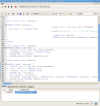Hello arbazpathan,
primary-key property is not required for table "vendor" if its "vendor_name" is already declared to be unique. If so, you can easily put a foreign-key constraint on table "purchase_order" referencing vendor(vendor_name) by means of "create table purchase_order(...)" or by "Alter table purchase_order ..." if table "purchase_order" already exists.
However, I am afraid that both tables already exist containing some data records, and, unfortunately, "vendor_name" of "vendor" is not declared to be unique. If so, your database design is inappropriate to model an one-to-many relationship correctly.
As adam_k already stated, a SQL trigger-program could be a good work-around.
I've got the feeling that there might be other potential solutions, as for example when checking whether entries in vendor table exist or not might happen within a procedural Java or PHP program.
So it would be a good idea to show more details by posting the really complete creation-statements of both tables "vendor" and "purchase_order" and also appropriate SQL statements for your wanted data processings.
-- tesu


